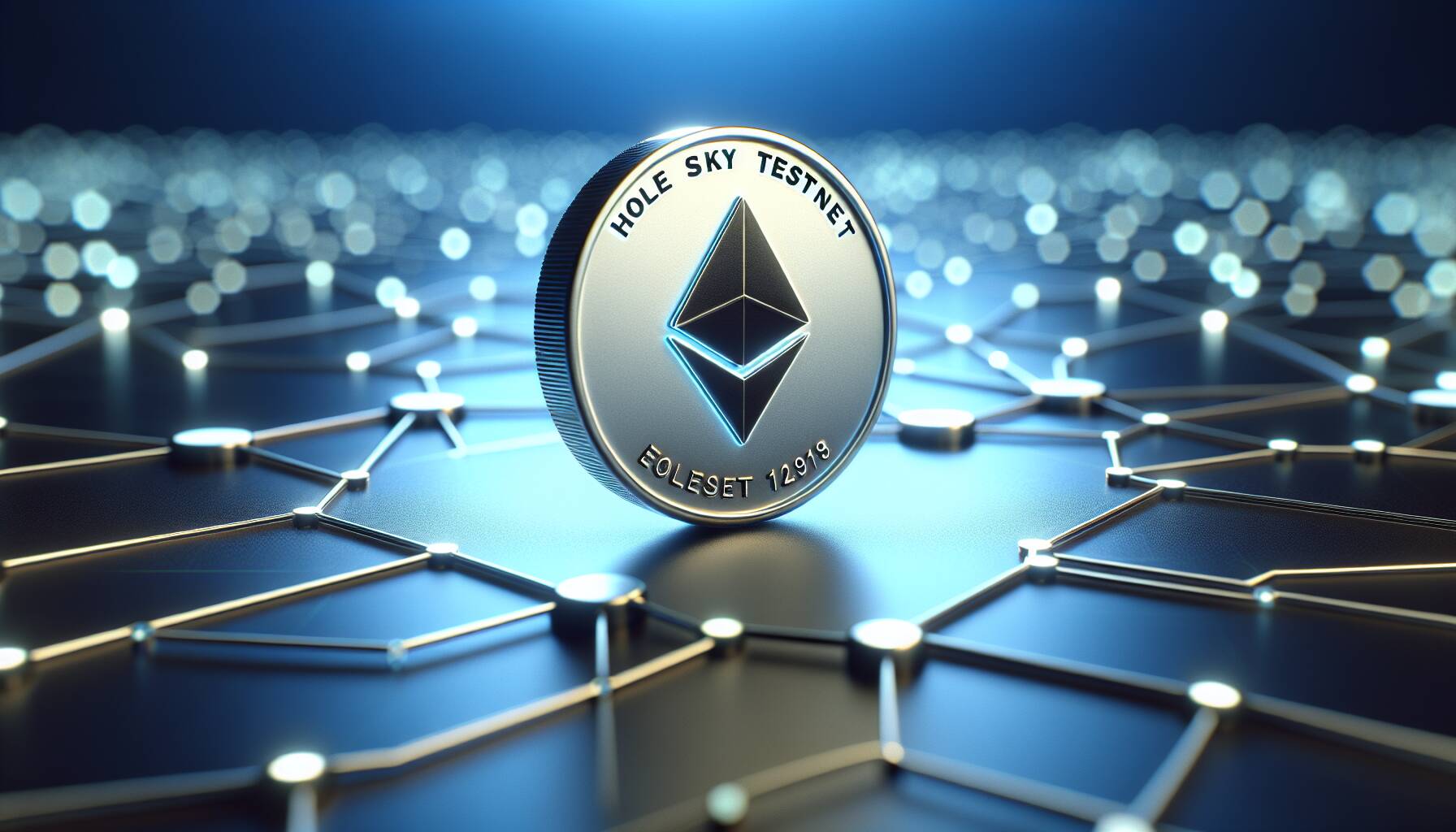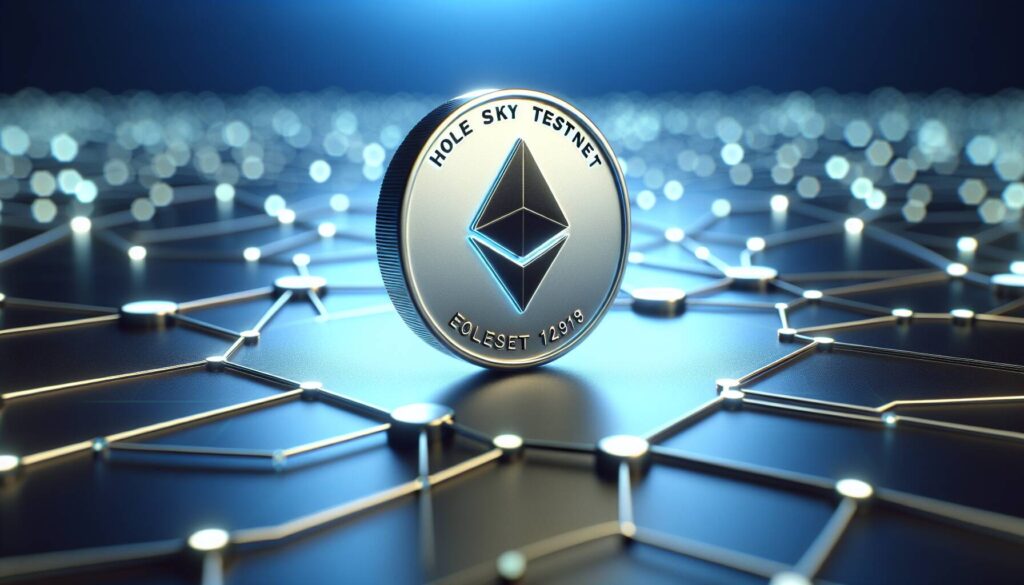In an encouraging development for the Ethereum community, the Holesky testnet achieved finality on Monday, marking a significant milestone for the platform. This momentous event happened shortly after the Pectra upgrade was implemented nearly two weeks prior. Specifically, Holesky reached epoch 119,090, sealing the deal at approximately 19:00 UTC with over two-thirds of validators affirming the network’s state. Finality is crucial as it ensures transactions become irreversible within two epochs, roughly translating to about 13 minutes.
Notably, this restoration follows a prolonged absence of finality since February 24, which was attributed to a configuration bug in the client software rather than the recent Pectra upgrade itself. Developers worked diligently over the past weeks to stabilize the network, pruning old states to facilitate further testing of the Pectra enhancements.
“The Pectra upgrade is noteworthy for introducing several pivotal enhancements to the Ethereum ecosystem,”
one developer stated, emphasizing the significance of gas payments in non-ETH tokens, the concept of account abstraction, and increased limits on staking. Meanwhile, the Sepolia testnet, which also adopted the Pectra upgrade, achieved finality but later encountered issues related to empty blocks due to a flawed deposit contract, which an attacker exploited by executing zero-token transfers. Fortunately, client teams swiftly resolved this challenge, showcasing the ongoing resilience and responsiveness of the Ethereum development community.
As the Ethereum network continues to evolve, these enhancements and the successful recovery of the Holesky testnet are poised to further solidify the platform’s position in the competitive cryptocurrency landscape.

Ethereum’s Holesky Testnet Achieves Finality
The recent developments in Ethereum’s Holesky testnet mark significant milestones for the blockchain ecosystem. Here are the key points related to this topic:
- Finality Achieved:
- Holesky testnet reached finality on Epoch 119,090 on a specific date, indicating successful transaction locking.
- This event signifies the completion of over two-thirds of validators successfully validating the network.
- Historic Bug Resolution:
- The absence of finality since February was due to a configuration bug in the client software, separate from the Pectra upgrade.
- Restoration efforts over previous weeks led to the re-establishment of network functionality.
- Stabilization Efforts:
- Developers are actively working on stabilizing nodes and pruning old states for full recovery of the testnet.
- These steps are crucial for ensuring the effectiveness of upcoming tests related to the Pectra upgrade.
- Issues with Sepolia Testnet:
- The Sepolia testnet also faced challenges post-Pectra, such as empty blocks caused by a flawed deposit contract.
- An attack exploiting this issue led to zero-token transfers, later resolved by client teams.
- Pectra Upgrade Enhancements:
- This upgrade brings essential improvements like gas payments in non-ETH tokens and account abstraction.
- It also enables higher staking limits, which may attract more participants to the Ethereum network.
Impact on Readers’ Lives:
The improvements in Ethereum’s infrastructure, particularly through upgrades like Pectra, could directly affect users by enhancing transaction efficiency and providing more flexible payment options. This, in turn, may lead to broader adoption and usability of Ethereum-based applications in everyday life.
Ethereum’s Holesky Testnet Achieves Finality: A Step Forward in Network Stability
The recent achievement of finality in Ethereum’s Holesky testnet marks a significant milestone following the Pectra upgrade. This advancement illustrates both competitive advantages and challenges within the burgeoning blockchain ecosystem. While Holesky’s progress signals a smooth restoration of transactions and validator engagement—especially with over two-thirds of validators participating—other testnets like Sepolia have faced hurdles, including issues with empty blocks due to exploitations. This contrast puts Holesky ahead as a more stable environment for developers and users keen on exploring new features.
One of the standout competitive advantages for Holesky lies in its recovery capabilities. The swift resolution of the configuration bug and the stabilization processes undertaken are commendable. This recovery effort not only reinforces the network’s reputation but also builds trust among developers and validators, who are essential for a decentralized ecosystem. In contrast, the troubles faced by Sepolia may deter some developers from relying on it for testing, potentially steering them towards Holesky instead.
However, while Holesky thrives, the situation can create challenges for projects that rely heavily on Sepolia. The recent exploits highlight vulnerabilities that could lead to hesitance from developers who seek reliability for their applications. Projects aiming to test and deploy on Ethereum’s ecosystem must now evaluate which testnet offers better support, documentation, and security measures. Holesky, boasting achievements in locking transactions and facilitating smoother testing processes, stands as an appealing option over Sepolia in this regard.
Furthermore, the enhancements introduced by the Pectra upgrade—such as gas payments in non-ETH tokens, account abstraction, and elevated staking limits—position the Holesky testnet as a front-runner in innovation. These features not only contribute to a more streamlined user experience but also attract developers eager to capitalize on the latest advancements in blockchain technology.
In summary, while Holesky’s recent success fosters a favorable environment for innovation and stability in Ethereum’s landscape, other testnets like Sepolia must swiftly address their shortcomings to retain developer interest and trust. The implications of these dynamics extend beyond mere technical performance; they shape the future of decentralized applications and overall network robustness.

















